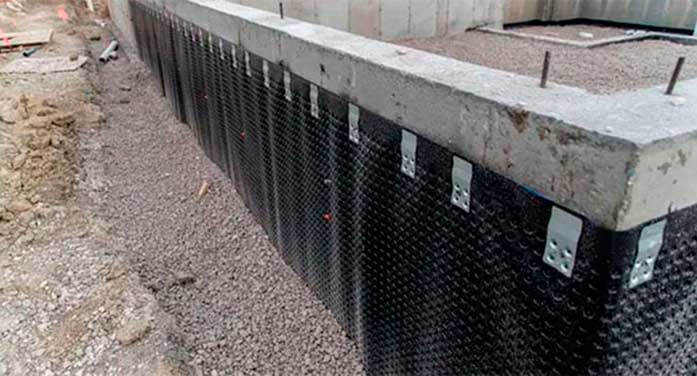Wet basements can occur virtually everywhere in both old and new homes. However, it is more prevalent in old homes. Modern homes are constructed with features that divert water away so that it doesn’t collect in the basement or get rid of the water before it causes damage to the house. These features are not available in old homes, and that is why they suffer from wet basements. Whatever the case is, the problem should be addressed through Toronto basement waterproofing.

Toronto basement waterproofing is an essential process if you have a wet basement. But what causes wet basement and how can we prevent it? Learn more here
If left unattended, the accumulation of water in your basement can result in serious problems in your home. For instance, it can lead to mould growth, destroy wall and ruin flooring. Moisture can make the basement uncomfortable to live in. Even the worst, the wet basement can affect the structural integrity of your home and make it hard to sell when you want to in future. To avoid those effects, you should opt for Toronto basement waterproofing.
- Waterproofing Your Basement.
The most straightforward way of curbing the problems of wet basement is by waterproofing the walls. You should also consider adding drainage features sump pump and drain tile in order to get rid of the water that accumulates at the basement. These features are best when added during the construction of the house since, at that time, the cost of installation is low.
Installing a sump pump and drain tile to the existing structure is expensive since there is a lot of excavation needed.
The best thing is that not all basement waterproofing Toronto process requires adding a new foundation drainage mechanism. In most cases, the causes of the wet basement emanate from the outside of your structure or above the ground and can be easily repaired. For instance, you may find out that what is causing leak basement is water coming from the roof, which is not correctly directed to flow away from the home’s foundation.
- Waterproofing Your Basement Isn’t Always The Answer.
Toronto basement waterproofing methods do not guarantee you a 100% solution to dealing with a wet basement. Think about it this way, if your home is located downhill, that implies the force of gravity will direct water to your house and seeps into your home’s foundation. In this case, the foundation of your home will be like a reservoir where overflow collects. With time, the pressure will develop against the basement floor, and it will find its way into your home through the walls and the floor. Remember that the pressure exerted by the water will lead to the development of more cracks.
So, you would expect that the problem will become worse as more water comes in. If the source of the water is not controlled, the problem could become worse and cause structural damage to your home due to pressure exerted to the walls by incoming water. At this point, the cracks become bigger, and the walls might fall. This will need costly repairs.
For this case, basement waterproofing Toronto will not be the right thing to do. However, there are some things you can do to ease your drainage system.
- Check Your Landscape.
After the construction of the house, the area near the walls is usually filled with loose soli due to the drain that was dug during the laying of the foundation. As time goes by, the loose soli get compressed and creates a small depression around the walls. These pools usually collect water when it rains and also most of the overflow is directed in them. This water ends up seeping through the cracks in the wall and creates intense pressure.
To solve this issue, inspect your house carefully, making sure the area around the walls is levelled. Note that, the landscape should slope away from the structure and not the other way round.
- Check Roof Downspout.
Water accumulation around your foundation can be made worse by gutter downspouts if the discharge is not correct. As such, make sure gutter downspouts is directed some meters away from the foundation of the home.
- Check Your Neighbour’s Run-Off.
You might have tried so much to divert water away from your home’s foundation. However, if the drainage of your neighbour directs water to your home, your efforts will be futile. So ensure your neighbour’s drainage system is not directing water to your home.
This content is a joint venture between our publication and our partner. We do not endorse any product or service in the article.

